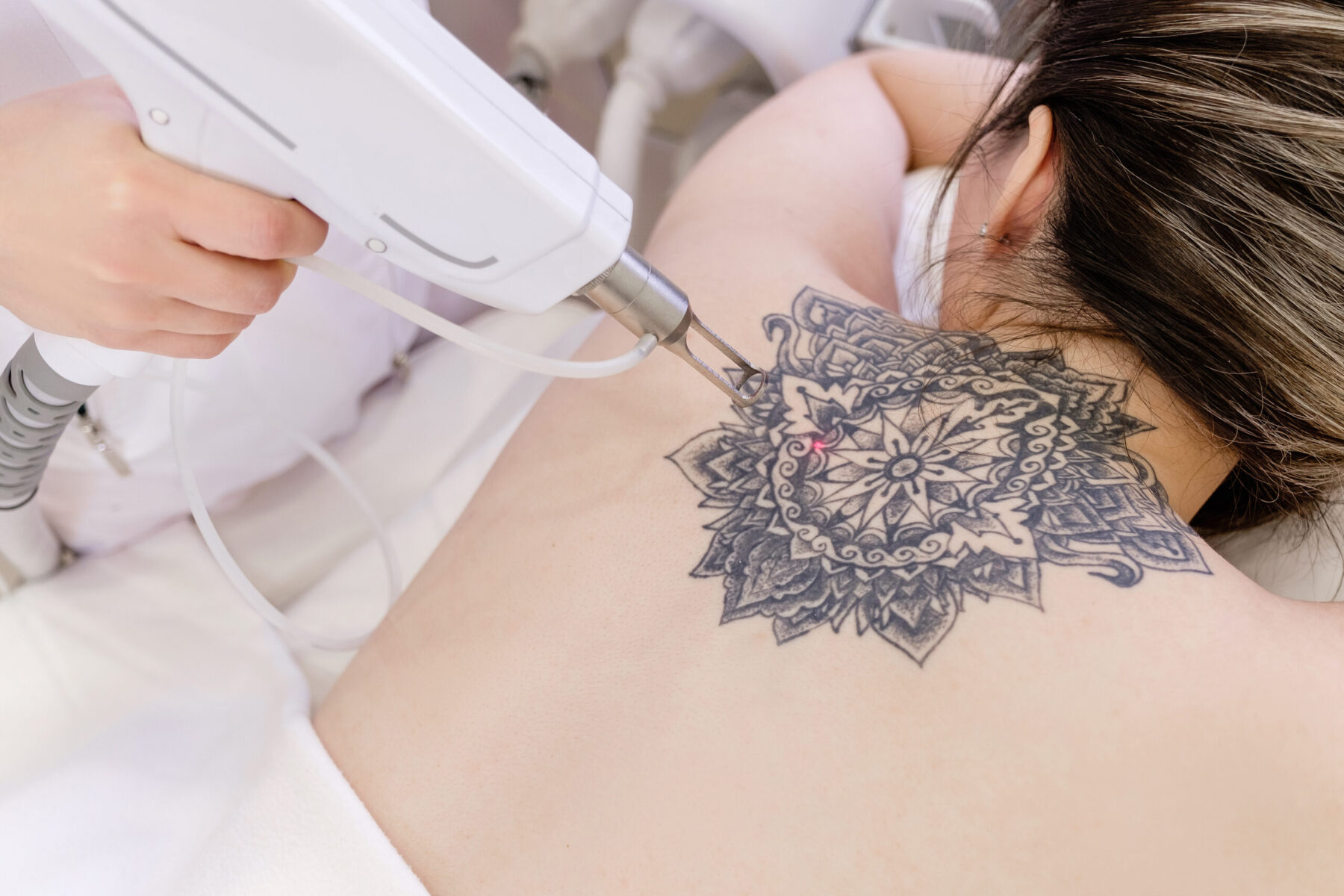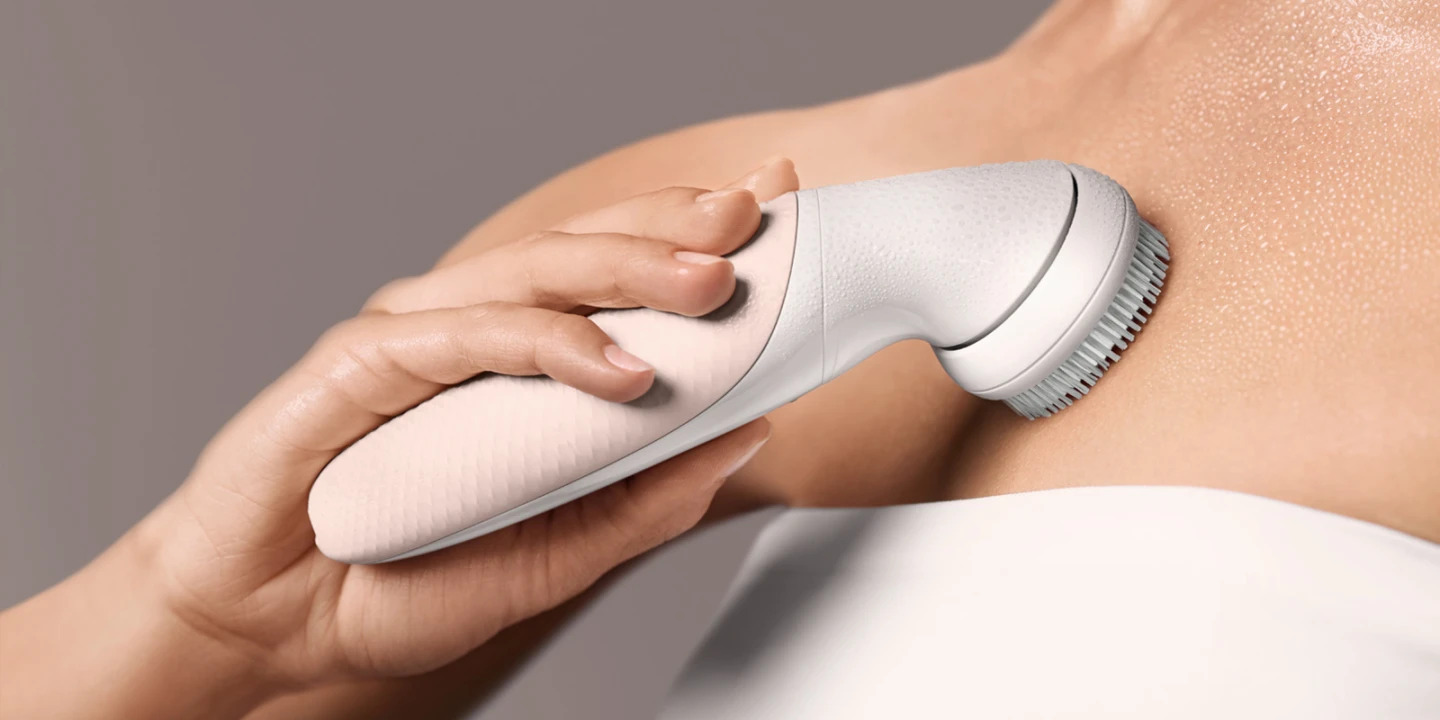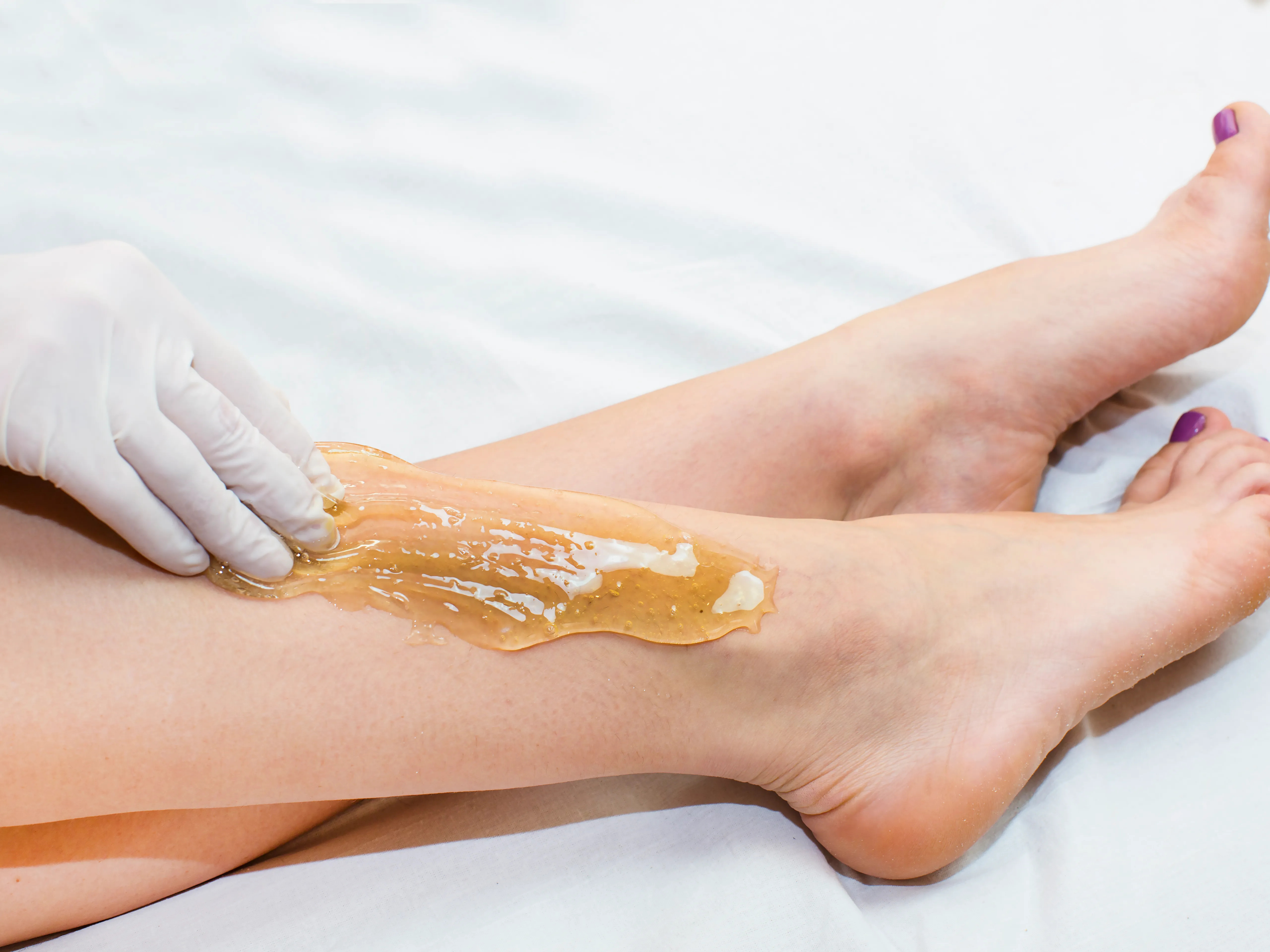Home>Latest Posts>How Often Can You Do At Home Laser Hair Removal


Latest Posts
How Often Can You Do At Home Laser Hair Removal
Modified: August 5, 2023
Discover the latest trends in at-home laser hair removal. Learn how often you can safely use this convenient method for smooth, hair-free skin.
(Many of the links in this article redirect to a specific reviewed product. Your purchase of these products through affiliate links helps to generate commission for Under-tec.com, at no extra cost. Learn more)
Table of Contents
- Introduction
- Understanding At-Home Laser Hair Removal
- Factors Affecting Frequency of At-Home Laser Hair Removal
- Recommended Frequency Guidelines for At-Home Laser Hair Removal
- Adjusting Frequency Based on Skin and Hair Type
- Potential Risks and Side Effects of At-Home Laser Hair Removal
- Tips for Maximizing Results and Minimizing Discomfort
- Conclusion
Introduction
Laser hair removal has become an increasingly popular method for achieving smooth, hair-free skin. Traditionally, this procedure was only performed in professional clinics or salons. However, with advancements in technology, at-home laser hair removal devices have become readily available and offer a convenient alternative for individuals seeking to remove unwanted hair in the comfort of their own homes.
At-home laser hair removal works by emitting a concentrated beam of light that is absorbed by the pigment in the hair follicles. This light energy is then converted into heat, effectively damaging the hair follicles and inhibiting future hair growth. The convenience and cost-effectiveness of at-home devices have made them an appealing option for many individuals who want to be in control of their hair removal process.
However, it is important to understand that at-home laser hair removal is not a one-time solution. The frequency at which you should perform the treatment depends on various factors, including your hair and skin type, the device you are using, and individual factors such as hair growth patterns and hormonal influences. In this article, we will explore the factors that affect the frequency of at-home laser hair removal and provide some guidelines to help you determine how often you can safely perform this procedure.
Understanding At-Home Laser Hair Removal
At-home laser hair removal devices are designed to offer a convenient and cost-effective solution for removing unwanted hair. These devices utilize similar technology to professional-grade laser machines, but with lower energy settings to ensure safety and ease of use for non-medical professionals.
The process of at-home laser hair removal involves targeting the hair follicles with a specific wavelength of light. This light is attracted to the pigment in the hair, which absorbs the energy and converts it into heat. The heat then damages the hair follicle, leading to a reduction in hair growth over time.
It is important to note that at-home laser hair removal is not suitable for everyone. The effectiveness of the treatment depends on factors such as hair color and skin tone. For example, individuals with light skin and dark hair tend to respond better to laser hair removal than those with dark skin or light blonde, gray, or red hair.
Furthermore, at-home laser hair removal devices may not be as powerful as those used in professional clinics. This means that multiple treatment sessions may be required to achieve the desired results. It is essential to follow the recommended treatment schedule and maintain consistency to maximize the effectiveness of at-home laser hair removal.
Additionally, it is crucial to remember that at-home laser hair removal devices do not provide permanent hair removal. The treatment offers long-term reduction in hair growth, but periodic maintenance sessions may be necessary to ensure lasting results. It is essential to manage your expectations and understand that consistent treatment will be required to maintain smooth and hair-free skin.
Lastly, it is worth mentioning that at-home laser hair removal devices come in different types and models. Some utilize intense pulsed light (IPL) technology, while others use diode lasers or other laser technologies. Each device has its own unique settings and guidelines for usage. It is important to read and follow the instructions provided with your specific device to ensure safe and effective use.
Factors Affecting Frequency of At-Home Laser Hair Removal
The frequency at which you should perform at-home laser hair removal treatments can vary depending on several factors. Understanding these factors can help you establish a treatment plan that is suitable for your specific needs and maximize the effectiveness of the procedure.
Hair Growth Cycle: One of the primary factors that influence the frequency of at-home laser hair removal is the hair growth cycle. Hair growth occurs in three main phases: anagen (active growth), catagen (transitional), and telogen (resting). Laser hair removal is most effective during the anagen phase, when the hair follicles are actively producing hair. Since not all hair follicles are in the anagen phase simultaneously, multiple treatments are required to target the hair follicles during this growth phase.
Treatment Area: The size of the treatment area also plays a role in determining the frequency of at-home laser hair removal treatments. Larger areas, such as the legs or back, may require more time and effort to treat compared to smaller areas like the upper lip or underarms. As a result, the treatments for larger areas may be spaced out more to allow for proper treatment of each area.
Skin and Hair Color: The color of your skin and hair can impact the frequency of at-home laser hair removal. Laser technology works by targeting the pigment in the hair follicles, so individuals with lighter skin tones and darker hair tend to have better results. Darker skin tones and lighter hair may require more frequent treatments or alternative hair removal methods.
Hormonal Influences: Hormonal changes in the body can affect hair growth and may impact the frequency of at-home laser hair removal. Hormonal fluctuations due to factors such as pregnancy, menopause, or certain medications can disrupt the hair growth cycle and require adjustments in the treatment schedule.
Device Specifications: Different at-home laser hair removal devices have varying specifications and guidelines for use. Some devices may recommend treatments every 4-6 weeks, while others may suggest longer intervals between sessions. It is crucial to follow the instructions provided by the manufacturer to ensure optimal results and minimize the risk of potential side effects.
Understanding these factors will help you determine the appropriate frequency for at-home laser hair removal treatments. It is important to be consistent with the treatment schedule and allow sufficient time for the hair to enter the anagen phase before each session. By considering these factors, you can effectively plan your at-home laser hair removal treatments and achieve the best possible results.
Recommended Frequency Guidelines for At-Home Laser Hair Removal
When it comes to at-home laser hair removal treatments, following recommended frequency guidelines is essential to maximize results and ensure the safety of the procedure. While exact guidelines may vary depending on the device and individual factors, here are some general recommendations to help you establish a treatment schedule:
Initial Treatment Phase: In the beginning, it is recommended to perform at-home laser hair removal treatments every 2-4 weeks. This frequent treatment schedule allows you to target the hair follicles during the active growth phase and achieve optimal results.
Maintenance Phase: After the initial treatment phase, you can move into a maintenance phase where treatments are performed less frequently. This phase typically involves treatments every 4-8 weeks to target any regrowth and maintain the desired results.
Consistency is Key: Consistency in performing at-home laser hair removal treatments is crucial to achieve long-lasting results. Skipping treatments or extending the time between sessions may compromise the effectiveness of the procedure and require additional sessions to catch up.
Adjusting Based on Results: It is important to assess the results of your at-home laser hair removal treatments and adjust the frequency accordingly. If you notice a significant reduction in hair growth, you may be able to extend the time between treatments. On the other hand, if you experience minimal progress, you may consider shortening the interval or seeking professional advice for alternative options.
Be Mindful of Sensitivity: While at-home laser hair removal is generally considered safe, it is essential to be mindful of your skin’s sensitivity. If you experience any discomfort, skin irritation, or adverse reactions, it may be necessary to extend the time between treatments or pause the procedure until your skin recovers.
Follow Manufacturer Instructions: Each at-home laser hair removal device is unique and may come with specific instructions and guidelines for usage. It is crucial to carefully read and follow these instructions to ensure safe and effective treatments. The manufacturer’s recommendations for frequency should be followed as they have designed the device with their specific technology and specifications in mind.
Remember, these frequency guidelines are general recommendations, and individual factors may necessitate adjustments to the treatment schedule. Consulting with a dermatologist or a licensed professional can provide personalized guidance based on your specific needs and circumstances.
By following the recommended frequency guidelines and being consistent with your treatments, you can achieve long-lasting results and enjoy the benefits of smooth, hair-free skin from the comfort of your own home.
Adjusting Frequency Based on Skin and Hair Type
When it comes to at-home laser hair removal, the frequency of treatments may need to be adjusted based on your specific skin and hair type. Understanding these factors can help tailor your treatment schedule for optimal results. Here are some considerations for adjusting frequency based on different skin and hair types:
Skin Tone: The color of your skin can impact the effectiveness and safety of at-home laser hair removal. Generally, individuals with lighter skin tones and darker hair tend to have better results. This is because the laser targets the pigment in the hair follicles. However, if you have a darker skin tone, it is important to use caution as certain lasers may cause pigmentation changes or skin damage. In such cases, it may be necessary to space out treatments and consult with a dermatologist or a licensed professional for personalized advice.
Hair Color: The color of your hair plays a role in determining the frequency of at-home laser hair removal treatments. Laser technology is most effective on dark hair since it contains more pigment to absorb the laser energy. Lighter hair colors, such as blonde, gray, or red, may not respond as well to laser treatments. In these cases, alternative hair removal methods or devices specifically designed for light hair may need to be considered.
Hair Thickness and Density: The thickness and density of your hair can also impact the treatment frequency. If you have thick and dense hair, it may require more sessions to achieve the desired reduction in hair growth. Thicker hair absorbs more laser energy, which may necessitate shorter intervals between treatments.
Hormonal Influences: Hormonal changes in the body can affect hair growth and may require adjustments to the treatment schedule. Hormonal fluctuations due to pregnancy, menopause, or certain medications may increase hair growth, necessitating more frequent treatments. In such cases, it is recommended to consult with a healthcare professional for personalized advice on adjusting the frequency of at-home laser hair removal.
Sensitivity: Everyone’s skin is different, and some individuals may have more sensitive skin than others. If you experience skin irritation, redness, or other adverse reactions after at-home laser hair removal treatments, it may be necessary to extend the time between sessions to allow your skin to recover. It is important to prioritize the health and well-being of your skin and adjust the frequency accordingly.
Consulting with a Professional: If you are unsure about the proper frequency for your skin and hair type, it can be beneficial to consult with a dermatologist or a licensed professional. They can assess your unique needs and provide personalized advice and recommendations for adjusting the treatment frequency to ensure optimal results while maintaining the safety of the procedure.
By considering your specific skin and hair type and making necessary adjustments to the treatment frequency, you can tailor your at-home laser hair removal routine for the best possible outcomes. Remember to prioritize safety, follow manufacturer instructions, and consult with professionals when needed.
Potential Risks and Side Effects of At-Home Laser Hair Removal
While at-home laser hair removal can be an effective and convenient method for removing unwanted hair, it is important to be aware of the potential risks and side effects associated with the procedure. Understanding these risks can help you make an informed decision and take necessary precautions. Here are some potential risks and side effects:
Skin Irritation and Redness: It is common to experience some degree of skin irritation and redness after at-home laser hair removal treatments. This is typically temporary and subsides within a few hours or days. However, individuals with sensitive skin may be more prone to prolonged redness or even blistering. It is important to follow proper aftercare instructions and allow your skin to heal before resuming treatments.
Pigmentation Changes: At-home laser hair removal devices may cause temporary or, in rare cases, permanent changes in skin pigmentation. This can manifest as darkening or lightening of the treated area. Darker skin tones are more susceptible to pigmentation changes, so it is crucial to use caution and follow the guidelines provided by the device manufacturer. If you notice any abnormal pigmentation changes, seek professional advice.
Eye Injury: Laser hair removal devices emit intense light, which can potentially harm the eyes if proper eye protection is not used. It is essential to follow the manufacturer’s instructions regarding eye protection and avoid aiming the laser near the eyes. Wearing protective goggles or eyewear is necessary to prevent eye injury during the treatment process.
Burns and Blisters: Incorrect use of at-home laser hair removal devices may result in burns and blisters. This can occur if the device is used on sensitive or irritated skin or if the intensity level is set too high. It is imperative to start with lower settings and gradually increase as tolerated. If you experience severe burning or blistering, discontinue use and seek medical attention.
Scarring: While rare, there is a slight risk of scarring with at-home laser hair removal. This is more likely to occur if the device is not used properly, or if it is used on areas with existing scars or skin conditions. Following the instructions provided by the manufacturer, treating small areas at a time, and avoiding over-treatment can help minimize the risk of scarring.
Contradictions and Precautions: Certain individuals may have contradictions or need to take precautions before undergoing at-home laser hair removal. This includes individuals with certain medical conditions, such as skin disorders or diabetes, individuals with a history of keloids or abnormal scarring, or individuals who are pregnant or breastfeeding. It is vital to review the device’s contraindications and consult with a healthcare professional if you have any concerns.
It is important to remember that these risks and side effects are generally minimal and can be minimized by following safety guidelines and using the device properly. If you have any concerns or experience severe side effects, it is advised to discontinue use and consult with a healthcare professional for appropriate advice.
Tips for Maximizing Results and Minimizing Discomfort
To ensure the best possible results and minimize any potential discomfort during at-home laser hair removal treatments, there are several tips and practices you can follow. By incorporating these tips into your routine, you can optimize your experience and achieve smoother, hair-free skin. Here are some tips to consider:
- Read and Follow Instructions: It is crucial to thoroughly read and understand the instructions provided by the manufacturer of your at-home laser hair removal device. Familiarize yourself with the device, its settings, and any safety precautions or guidelines for usage. Following the instructions will help maximize the effectiveness of the treatment and reduce the risk of adverse effects.
- Prepare Your Skin: Before each treatment session, make sure to prepare your skin properly. Cleanse the area to be treated and ensure it is free from any lotions, creams, or oils. This helps to ensure that the laser can penetrate the hair follicles effectively.
- Shave the Treatment Area: It is recommended to shave the treatment area prior to each session. This helps to ensure that the laser energy is focused on the hair follicles rather than being absorbed by longer hair on the surface of the skin. Shaving also reduces the risk of hair being singed or burned during the treatment process.
- Start with Lower Energy Levels: If you are new to at-home laser hair removal or have sensitive skin, it is advisable to start with lower energy levels. Gradually increase the intensity if tolerated well. This allows your skin to adjust and reduces the risk of discomfort or adverse reactions.
- Be Consistent: Consistency is key when it comes to at-home laser hair removal. Stick to the recommended treatment schedule and avoid skipping sessions. Missing treatments can prolong the overall process and reduce the effectiveness of the procedure.
- Avoid Sun Exposure: It is important to avoid sun exposure before and after at-home laser hair removal treatments. Ultraviolet (UV) rays can make your skin more sensitive and increase the risk of side effects. If you must be exposed to the sun, use a broad-spectrum sunscreen with a high SPF to protect the treated area.
- Moisturize Your Skin: After each treatment, it is beneficial to apply a gentle, moisturizing lotion or gel to soothe the skin and keep it hydrated. This can help alleviate any temporary redness or irritation and promote faster healing.
- Consider Ice or Cold Compress: If you experience any discomfort or irritation after a treatment, applying a cold compress or ice pack can help reduce redness and inflammation. Be sure to wrap the cold compress in a cloth to protect your skin from direct contact with ice.
- Monitor Your Skin: It is important to closely monitor your skin during and after each treatment session. If you notice any severe or prolonged side effects such as blistering, burns, or abnormal pigment changes, discontinue use and consult with a healthcare professional.
- Patience is Key: Results from at-home laser hair removal take time and patience. It is normal to experience gradual reduction in hair growth over several sessions. It may take a few months to achieve the desired results. Stay consistent and follow the recommended treatment schedule for the best outcomes.
By incorporating these tips into your at-home laser hair removal routine, you can enhance your experience and increase the likelihood of achieving smooth and hair-free skin. Remember, if you have any concerns or questions, it is always best to consult with a dermatologist or a licensed professional.
Conclusion
At-home laser hair removal offers a convenient and cost-effective way to achieve smooth, hair-free skin. By understanding the factors that affect the frequency of treatments, you can develop a personalized treatment plan that suits your unique needs. Factors such as the hair growth cycle, treatment area, skin and hair type, hormonal influences, and device specifications should all be considered when determining the frequency of at-home laser hair removal treatments.
Following the recommended frequency guidelines and making adjustments based on your skin and hair type will help you maximize the effectiveness of the procedure. It is important to be aware of the potential risks and side effects associated with at-home laser hair removal, such as skin irritation, pigmentation changes, eye injury, burns, and scarring. By taking necessary precautions, reading and following device instructions, and seeking professional advice when needed, you can minimize these risks and ensure a safer treatment experience.
Tips for maximizing results and minimizing discomfort, such as proper preparation of the skin, shaving the treatment area, starting with lower energy levels, being consistent with treatments, and taking care of your skin post-treatment, can further enhance the effectiveness of at-home laser hair removal. As with any procedure, patience is key, as it may take several sessions to achieve the desired results.
Remember, at-home laser hair removal is not a one-time solution for permanent hair removal. Periodic maintenance treatments may be required to maintain smooth and hair-free skin. If you have any concerns or experience severe side effects, it is always best to discontinue use and consult with a dermatologist or a licensed professional for appropriate guidance.
With proper understanding, consistency, and adherence to safety guidelines, you can safely and effectively use at-home laser hair removal devices to enjoy the benefits of long-lasting hair reduction and smoother skin.









